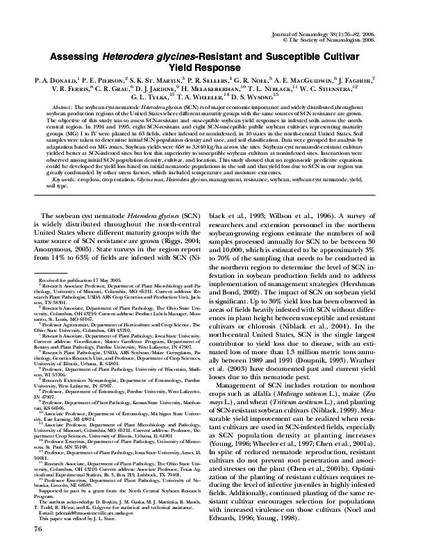
The soybean cyst nematode Heterodera glycines (SCN) is of major economic importance and widely distributed throughout soybean production regions of the United States where different maturity groups with the same sources of SCN resistance are grown. The objective of this study was to assess SCN-resistant and -susceptible soybean yield responses in infested soils across the northcentral region. In 1994 and 1995, eight SCN-resistant and eight SCN-susceptible public soybean cultivars representing maturity groups (MG) I to IV were planted in 63 fields, either infested or noninfested, in 10 states in the north-central United States. Soil samples were taken to determine initial SCN population density and race, and soil classification. Data were grouped for analysis by adaptation based on MG zones. Soybean yields were 658 to 3,840 kg/ha across the sites. Soybean cyst nematode-resistant cultivars yielded better at SCN-infested sites but lost this superiority to susceptible soybean cultivars at noninfested sites. Interactions were observed among initial SCN population density, cultivar, and location. This study showed that no region-wide predictive equations could be developed for yield loss based on initial nematode populations in the soil and that yield loss due to SCN in our region was greatly confounded by other stress factors, which included temperature and moisture extremes.
Available at: http://works.bepress.com/gregory-tylka/167/

This article is published as Donald, P. A., P. E. Pierson, SK St Martin, P. R. Sellers, G. R. Noel, A. E. MacGuidwin, J. Faghihi et al. "Assessing Heterodera glycines-Resistant and Susceptible Cultivar Yield Response." Journal of Nematology 38, no. 1: 76-82.